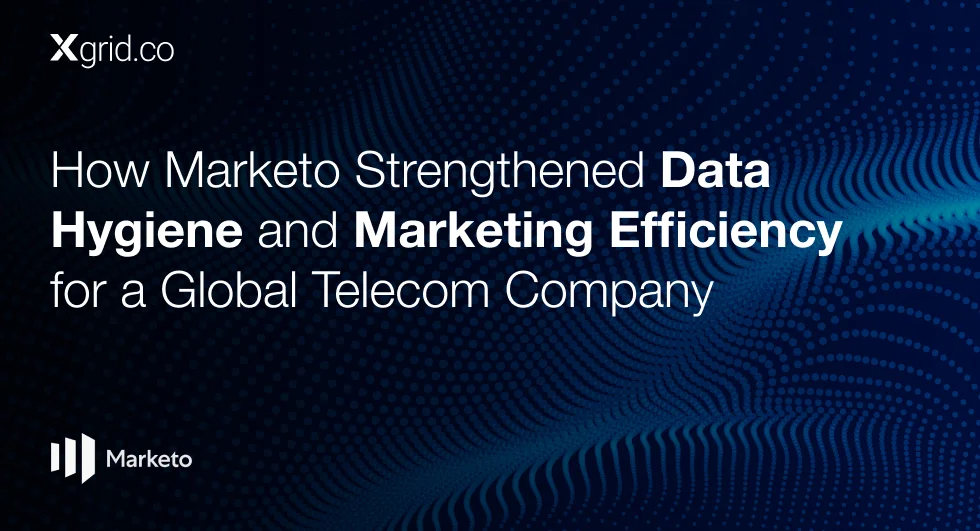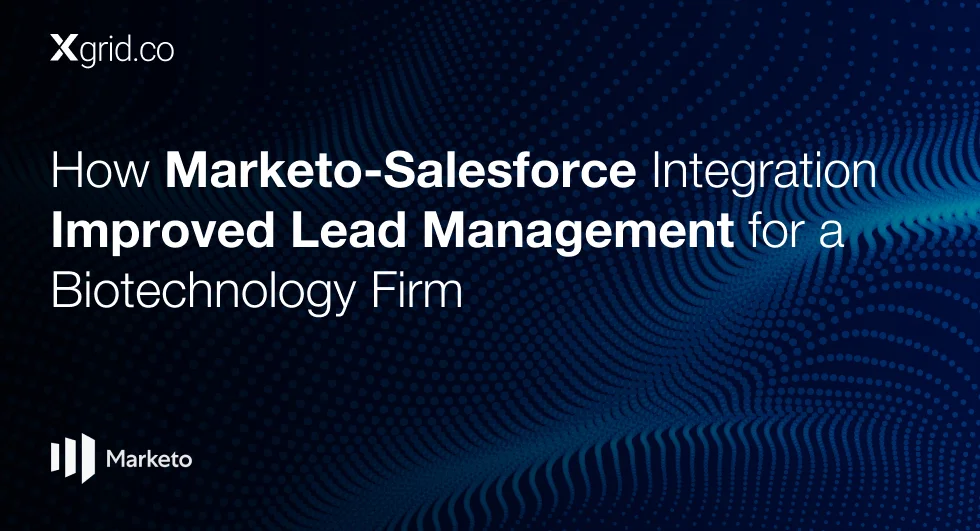Marketo Flexibility & Best Practices for Marketing Automation: Kacper Gawlick
Q: Kacper, could you share your journey with Marketo and how it compares to other marketing automation platforms you’ve used?
A: My experience with marketing automation began with Eloqua, which I initially preferred due to its robust features. When I first transitioned to Marketo, I was skeptical. I missed Eloqua’s ‘canvas’ for creating visual workflows and felt that Marketo was a bit more static. However, as I spent more time exploring Marketo, I found it to be an advanced and robust platform, especially considering that it’s developed by Adobe.
Marketo offers a flexible infrastructure that can be adapted to support a variety of processes. While it doesn’t have Eloqua’s visual ‘canvas,’ it provides a different kind of flexibility that allows you to modify workflows as campaigns evolve. This adaptability has made Marketo one of my go-to tools for companies looking for a marketing automation platform that can mold to their unique business needs.
Q: You mentioned some features in Eloqua that you miss in Marketo. What improvements do you think would enhance Marketo’s functionality?
A: Yes, there are certainly areas where Marketo could benefit from enhancements. The first would be visual tools. Eloqua’s ‘canvas’ provided a dynamic, global overview of workflows, which made it easy to visualize processes. In contrast, Marketo’s approach is more static, and I think introducing a similar visual interface would significantly improve the user experience, especially for those managing complex campaigns.
Another area is field creation and token organization. Marketo would be more efficient if users had better control over creating and managing fields directly within the platform. Streamlining token organization would also be beneficial, as tokens are critical for customizing campaigns. Lastly, Marketo’s reporting tools need improvement. “Eloqua offered remarkable flexibility in reporting,” and having more advanced analytics capabilities in Marketo would reduce the time spent on generating reports and allow for deeper insights.
Q: What do you see as the most effective way to set up Marketo, especially for companies with complex marketing needs?
A: When setting up Marketo, many companies rely on an implementation checklist, which is a good starting point. However, at some point, companies grow beyond the checklist. Marketing environments are dynamic, and as businesses expand, their needs become more sophisticated. The standard checklist is often too restrictive for this growth.
To overcome this, companies need to adopt a more flexible and detailed approach. I recommend using what I call a “soundbox” strategy. By using a soundbox, users can test out theories in a sandbox environment, receive feedback, and refine their strategies. This allows for safe experimentation and innovation, helping teams refine their campaigns before full-scale implementation. Additionally, engaging with community resources like Marketo User Groups (MUGs) and Marketo Nation forums can provide valuable insights and real-world solutions for more complex setups.
Q: You’ve emphasized the importance of training. How does skill level impact the use of Marketo, and what can companies do to improve this?
A: The effectiveness of Marketo is highly dependent on the skill level of its users. Many companies assign specific roles, such as campaign execution, to individuals, which often limits their exposure to the platform’s full functionalities. This siloed approach leads to underutilization of Marketo’s capabilities.
To address this, I advocate for comprehensive upskilling training. Upscaling training should not only enhance the specific skills related to a person’s immediate tasks but also broaden their understanding of the platform as a whole. For instance, someone handling campaigns should also learn about data management and reporting. This holistic approach ensures that the team can handle complex tasks, adapt to various roles, and ultimately get the most out of Marketo.
Q: How do you view the integration between Marketo and Salesforce, and what improvements would you suggest?
A: Integration between Marketo and Salesforce is crucial for seamless data flow and alignment between marketing and sales. However, the current integration could be smoother, with more flexibility in data handling between the platforms. Adobe could enhance Marketo’s integration features to facilitate more nuanced data exchange and process alignment.
A streamlined integration would enable marketing teams to pass on leads to sales seamlessly, complete with all relevant information. By improving synchronization, businesses could better track the customer journey, align marketing and sales efforts, and generate more accurate reporting. It’s about setting up a robust integration workflow tailored to the specific needs of the company.
Q: Can you elaborate on the ‘soundbox’ strategy and how it benefits Marketo users?
A: The soundbox approach is all about creating a safe space to experiment. It involves using a sandbox environment where users can test new ideas, workflows, and strategies without affecting the live Marketo instance. By using a soundbox, users can test out theories in a sandbox environment, receive feedback, and refine their strategies.
This practice is invaluable for both learning and innovation. It allows teams to experiment, identify best practices, and fine-tune their campaigns before full-scale implementation. The soundbox strategy also fosters a culture of continuous improvement, as it encourages team members to collaborate, share feedback, and iteratively refine their marketing processes.
Q: You mentioned Marketo’s Revenue Cycle Model (RCM). How should marketers approach implementing it effectively?
A: RCM is designed to mirror the entire sales funnel, so a deep understanding of lifecycle stages is critical for its implementation. Before diving into the technical setup, it’s essential to grasp the theory behind each stage of the funnel. This means defining what each lifecycle stage represents for your organization and setting clear criteria for moving leads through these stages.
Implementation involves setting up these lifecycle stages within Marketo, continuously analyzing performance, and aligning the marketing and sales teams. Regular analysis and adjustments are necessary to ensure the model accurately reflects the customer journey. Having a shared understanding across teams is key to getting the most out of the RCM and ensuring accurate stage reporting.
Q: What are your thoughts on leveraging Marketo’s reverse IP capabilities and anonymous data?
A: Reverse IP is an untapped potential within Marketo. It allows you to capture valuable data about anonymous visitors to your website, providing insights that can be used for targeted marketing efforts. However, I believe Marketo could enhance how it displays this information. For instance, adding more detailed columns, such as identifying the company headquarters, would significantly improve its utility.
The idea here is that whoever can make the most out of reverse IP has a valuable asset. “Whoever has done it—there is money in it,” I like to say. By unlocking the full potential of reverse IP, marketers can identify and engage potential customers more effectively, even before they officially become leads.
Downloads
Article (PDF-276 KB)MOST POPULAR INSIGHTS
- How Marketo Strengthened Data Hygiene and Marketing Efficiency for a Global Telecom Company
- How Marketo-Salesforce Integration Improved Lead Management for a Biotechnology Firm
- How a Tech Company Used Marketo to Refine ABM Strategies for Sales Engagement
- How Marketo Campaigns Were Streamlined with Templates and Tokens
- How Marketo Solidified Marketing Insights with Custom Attribution Models
Related Articles
Related Articles

Established in 2012, Xgrid has a history of delivering a wide range of intelligent and secure cloud infrastructure, user interface and user experience solutions. Our strength lies in our team and its ability to deliver end-to-end solutions using cutting edge technologies.
OFFICE ADDRESS
US Address:
Plug and Play Tech Center, 440 N Wolfe Rd, Sunnyvale, CA 94085
Dubai Address:
Dubai Silicon Oasis, DDP, Building A1, Dubai, United Arab Emirates
Pakistan Address:
Xgrid Solutions (Private) Limited, Bldg 96, GCC-11, Civic Center, Gulberg Greens, Islamabad
Xgrid Solutions (Pvt) Ltd, Daftarkhwan (One), Building #254/1, Sector G, Phase 5, DHA, Lahore




